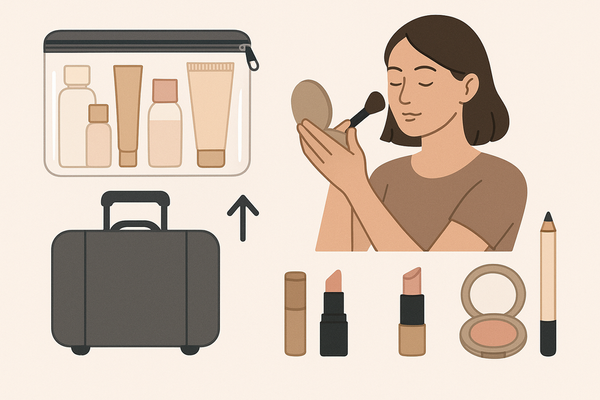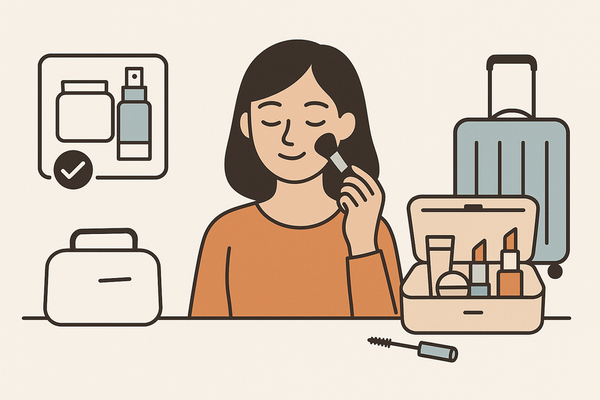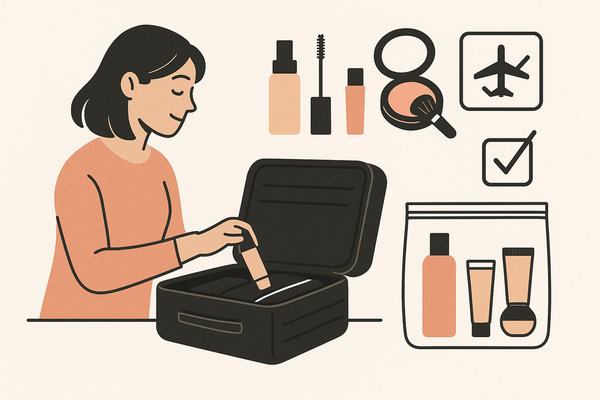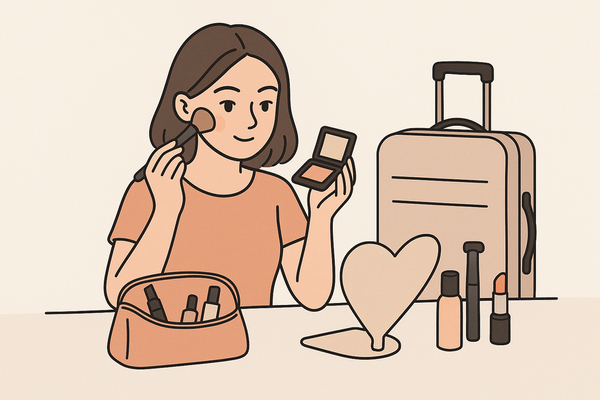10 Game-Changing Green Makeup Tips for Eco-Conscious Beauty Enthusiasts
Discover 10 essential green makeup tips for eco-conscious beauty enthusiasts, focusing on sustainable packaging and cruelty-free, non-toxic ingredients.
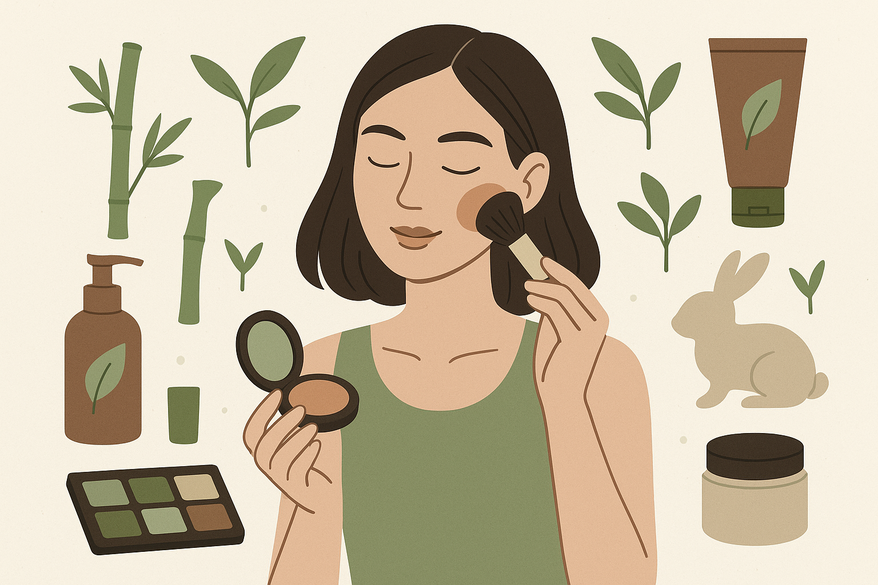
8-minute read
Key Takeaways
- Natural ingredients matter: Choose products with botanical extracts and mineral pigments.
- Cruelty-free credentials: Look for trusted logos like Leaping Bunny or PETA-approved.
- Sustainable packaging: Opt for refillable systems, glass jars, and compostable materials.
- Gradual transition: Swap one product at a time to minimize waste and budget strain.
- Community support: Engage with eco-beauty groups for tips, recommendations, and accountability.
Table of Contents
- Section 1: Understanding Green Makeup
- Section 2: Essential Green Makeup Tips
- Section 3: How to Transition to a Green Makeup Routine
- Section 4: Product Recommendations and Reviews
- Section 5: The Broader Impact of Green Makeup
- Makeup Check AI Integration
- Conclusion
- FAQ
Section 1: Understanding Green Makeup
Keywords: green makeup tips, eco-friendly processes, sustainable packaging
Green makeup tips are practical strategies for choosing and applying beauty products that are environmentally friendly, non-toxic, and ethically produced. They empower eco-conscious beauty enthusiasts to reduce their personal and environmental impact while maintaining their beauty routines. The beauty industry poses significant concerns around waste, chemical pollution, and animal welfare, making green makeup guidance more vital than ever. By embracing these approaches, you protect your health and support planetary well-being with every swipe of foundation or dab of blush.
- Natural or renewable ingredients: Botanical extracts, minerals, and nature-identical sources grown via sustainable agriculture.
- Eco-friendly manufacturing processes: Low carbon emissions, water- and energy-efficient facilities.
- Sustainable packaging: Recyclable, reusable, compostable materials; minimal single-use plastics. Learn more about responsible packaging disposal.
- Cruelty-free and non-toxic formulations: No animal testing; free from parabens, phthalates, synthetic fragrances.
Benefits of going green:
- Personal health: Fewer skin irritations, reduced allergies, lower long-term toxin exposure. Many users report calmer skin and fewer breakouts after switching to clean cosmetics.
- Environmental impact: Less chemical runoff into waterways, smaller carbon footprint, support for ethical labor and animal welfare standards as highlighted in the business of green cosmetics.
Section 2: Essential Green Makeup Tips
Keyword: green makeup tips
- Choose natural/organic ingredients
• Look for short INCI lists with recognizable botanical names (e.g., Aloe Barbadensis, Camellia Sinensis).
• Avoid synthetic dyes and fragrances that can irritate skin. - Prioritize cruelty-free and vegan certifications
• Seek Leaping Bunny, PETA, or The Vegan Society logos.
• Real-world example: I switched to a PETA-approved mascara and noticed no more eye irritation. - Opt for eco-friendly packaging
• Glass jars, aluminum compacts, and refillable systems.
• Brands like Elate Cosmetics use bamboo tubes, reducing plastic waste. - Verify ethical sourcing
• Look for Fair Trade or Rainforest Alliance seals.
• Ethical sourcing ensures farmers and workers earn fair wages. - Use multi-purpose products
• Lip-and-cheek tints or tinted moisturizers.
• Fewer items in your kit equals less packaging waste. - Read labels for hidden toxins
• Avoid parabens, phthalates, microplastics, and synthetic dyes.
• Tip: Create a personal ingredient blacklist to check before you buy. - Beware of greenwashing
• Demand third-party validation and transparent ingredient lists.
• Spot-check brand claims against certifications such as green cosmetics and sustainable beauty. - Support refillable or bulk options
• Many brands offer cartridge refills or bulk product stations.
• Reduces single-use packaging and shipping emissions through sustainable beauty practices.
Section 3: How to Transition to a Green Makeup Routine
Keywords: green makeup tips, sustainable, eco-friendly makeup choices
- Inventory current kit
• List items by type (foundation, mascara, etc.) and usage frequency.
• Mark favorites and nearly empty products for first swaps. - Identify priority swaps
• Tackle products in constant skin contact first (e.g., foundation, lip balm).
• These items have the most direct health impact. - Research eco-alternatives
• Use criteria from Section 2. Bookmark reputable green beauty sites and brand pages. - Replace one product at a time
• Finish current items to avoid waste.
• This gradual approach prevents budget overload. - Learn certifications and label jargon
• Make a cheat sheet of trusted logos (Ecocert, USDA Organic, Cruelty-Free International).
• Note ingredients to avoid and preferred ingredient families. - Join sustainable beauty communities
• Follow forums, Facebook groups, and Instagram accounts dedicated to clean beauty.
• Real-world tip: I found my favorite green concealer recommendation in a zero-waste Facebook group. - Dispose responsibly
• Separate paper, glass, and plastic packaging for recycling.
• Check local guidelines for caps, pumps, and mixed-material items.
For a deeper dive into building a fully sustainable makeup routine, check out the sustainable makeup routine guide.
Section 4: Product Recommendations and Reviews
Keywords: green makeup tips, cruelty-free brands, eco-friendly packaging
- RMS Beauty “Un” Cover-Up
• Certification: COSMOS-organic, cruelty-free, vegan.
• Key ingredients: Mineral pigments, coconut oil.
• Packaging: Recyclable glass jar, metal cap.
• Price: $38 | Available at rmsbeauty.com. - ILIA True Skin Serum Foundation
• Certification: EWG Verified, B Corp.
• Key ingredients: Aloe leaf, jojoba, rosehip.
• Packaging: FSC-certified paper box, recyclable plastic pump.
• Price: $48 | Available at ilia.com. - Kjaer Weis Cream Blush
• Certification: NATRUE, cruelty-free, organic.
• Key ingredients: Organic jojoba, shea butter.
• Packaging: Refillable metal compact; replaceable pans sold separately.
• Price: $60 (compact + refill) | Available at kjaerweis.com. - Elate Cosmetics Hydrating Face Oil
• Certification: Leaping Bunny, vegan.
• Key ingredients: Rosehip, argan, jojoba oils.
• Packaging: Refillable bamboo tube with glass insert.
• Price: $32 | Available at elatecosmetics.com. - EcoTools Daily Pretty Essential Set
• Certification: FSC bamboo, synthetic cruelty-free bristles.
• Contents: Foundation brush, blush brush, powder brush.
• Packaging: Recycled cardboard box.
• Price: $24 | Available at most drugstores and ecotools.com.
Section 5: The Broader Impact of Green Makeup
Keywords: green makeup tips, sustainable beauty, eco-conscious beauty enthusiasts
- Plastic & chemical waste reduction in landfills and waterways, improving ecosystem health through sustainable beauty practices.
- Market shift pressures brands toward sustainable innovation—more refillable lines, cleaner formulas, and smarter packaging as seen in the business of green cosmetics.
- Support for ethical labor practices, animal welfare, and fair-trade farmers through certified sourcing.
- Contribution to regulatory change: consumer demand influences policymakers to tighten safety and environmental standards via green cosmetics sustainable beauty.
Learn how to properly dispose of your makeup with greener methods in the eco-friendly makeup disposal guide.
Makeup Check AI Integration
You can also explore personalized eco-friendly makeup recommendations with Makeup Check AI, which helps generate clean, sustainable product suggestions based on your style and skin needs.
Conclusion
Green makeup tips—select natural ingredients, verify cruelty-free certifications, choose sustainable packaging, and support refillable systems—offer both personal and planetary benefits. Transition gradually by swapping one product at a time, using label-reading skills, and tapping into eco-beauty communities. Share your favorite green makeup tips and success stories on social media to inspire fellow enthusiasts. Together, we can create a cleaner, greener future for beauty.
FAQ
- What exactly is “green makeup”?
Green makeup refers to cosmetics made with natural or renewable ingredients, produced via eco-friendly processes, and packaged sustainably—often with cruelty-free and non-toxic formulations. - How do I spot greenwashing?
Look for transparent ingredient lists and recognized third-party certifications (Ecocert, COSMOS, USDA Organic). If a brand makes vague claims without proof, proceed with caution. - Are green makeup products as effective as conventional ones?
Yes—many green brands use high-quality botanical extracts and mineral pigments that perform just as well, if not better, while being gentler on your skin. - Can I transition my entire kit at once?
It’s best to swap one product at a time. This minimizes waste, spreads out cost, and helps you identify which new formulas work best for your skin. - Where can I recycle or refill my makeup containers?
Many brands offer in-store refill stations or mail-back programs. Local recycling guidelines vary, so check your municipality for drop-off locations and accepted materials.

